 Grayson Perry
Grayson Perry is a British artist who was born on March 24, 1960. He mainly works within the field of pottery of ceramics and these are the fields which he is also famously known in along with the fact that he is a cross-dresser.
Grayson Perry
Grayson Perry is a British artist who was born on March 24, 1960. He mainly works within the field of pottery of ceramics and these are the fields which he is also famously known in along with the fact that he is a cross-dresser.
Grayson's works are said and clearly depict images of disturbing social issues around the world.
Grayson Perry was awarded the Turner Prize in 2003 allowing him to be the first potter to ever win the prize and rightly so because his work is outstanding.
Examples of Grayson's works:
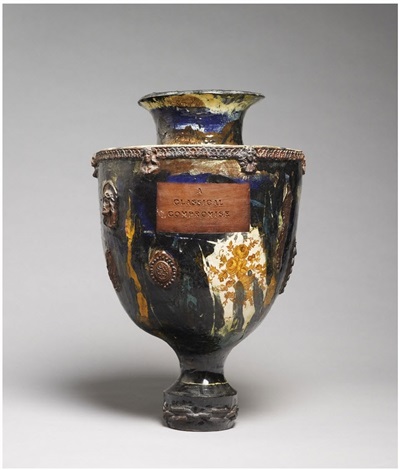
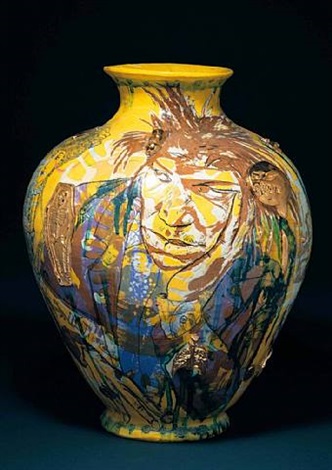
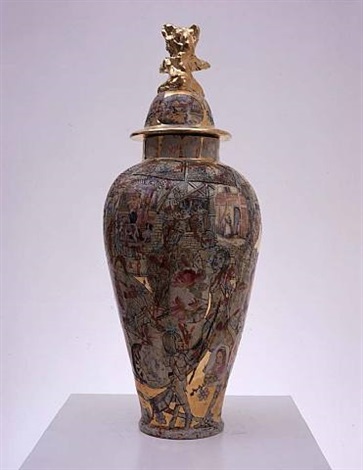
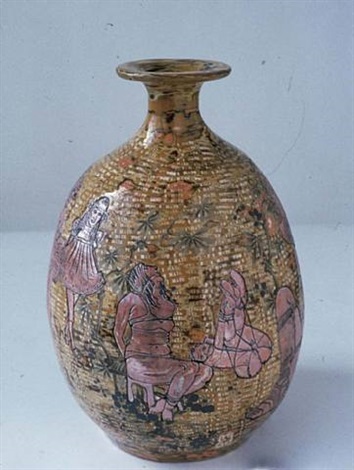



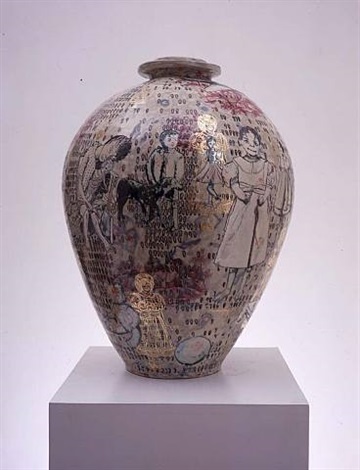
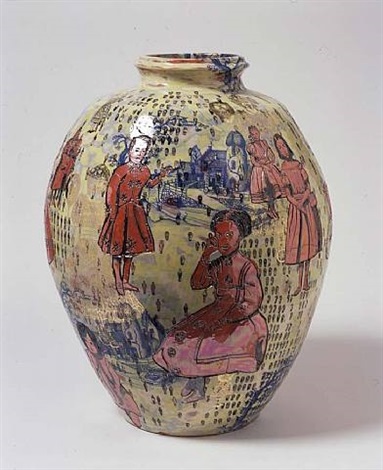

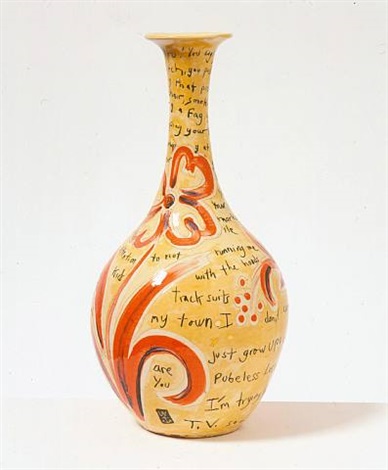
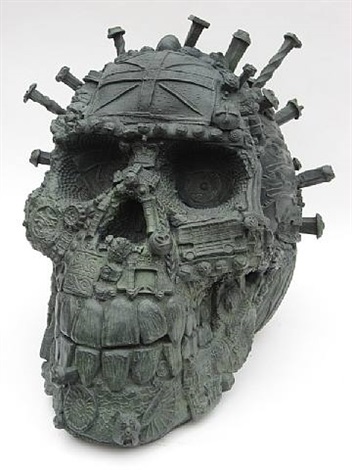

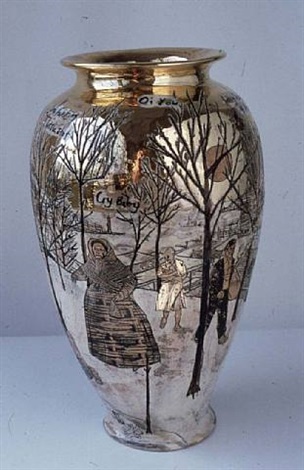 Grayson is a very complex potter, unlike many other potters, his work goes through many stages and this gives his work an edge above other works. His works are evidently influenced by Greek pottery and this is seen through the use of story telling within his paintings on the pots. His pots are made through a traditional method called coiling, then he uses techniques such as glazing, incision, embossing, and other photographic transfers.
Grayson is a very complex potter, unlike many other potters, his work goes through many stages and this gives his work an edge above other works. His works are evidently influenced by Greek pottery and this is seen through the use of story telling within his paintings on the pots. His pots are made through a traditional method called coiling, then he uses techniques such as glazing, incision, embossing, and other photographic transfers.
I like the way Grayson Perry goes about with creating his pieces and this is because he implements old styles of pottery and infuses them with his on outtake on how pottery should be like. The fact that he displays the troubles and the problems of life today within his pottery is probably the reason why it is so appealing towards the public. The paintings which are displayed within his pottery are very intricate and this shows that not only is he portraying what he feels strongly about on his pieces, but he is also doing it with patience through all the detail in the paintings.
In addition, I quite like the way Grayson works, this is because although other potters might have paintings implemented on their pieces, Grayson's pots have clear meanings and are appealing to he public of today and are able to tell a story to those of the future.
 Ivan Pavlov
Ivan Pavlov was a Russian physiologist who was born on September 26, 1849 but died on February 27, 1936. Pavlov was famously known for his work and development in classical conditioning which is also known as Pavlov conditioning.
Ivan Pavlov
Ivan Pavlov was a Russian physiologist who was born on September 26, 1849 but died on February 27, 1936. Pavlov was famously known for his work and development in classical conditioning which is also known as Pavlov conditioning.
Pavlov was inspired by two main people, the first being D. I. Pisarev who was the person who gave Pavlov the advice to pursue a scientific career, Pavlov's other influence was a man called I. M. Sechenov who is said to be "The father of psychology".
Pavlov's interest with conditioned reflex is said to have come about by mistake and this was whilst he was conducting experiments about the digestion in dogs. Within my research I found out that the basic elements within Pavlov's classical conditioning can be seen within classrooms and other learning environments.
Also, I found out that Pavlov "had learned that when a buzzer or metronome was sounded in subsequent time with food being presented to the dog in consecutive sequences, the dog would initially salivate when the food was presented. The dog would later come to associate the sound with the presentation of the food and salivate upon the presentation of that stimulus". This means that "Pavlov's early experiments used manipulation of events or stimuli preceding behaviour (i.e., a tone) to produce salivation in dogs much like teachers manipulate instruction and learning environments to produce positive behaviours or decrease maladaptive behaviours. Although he did not refer to the tone as an antecedent, Pavlov was one of the first scientists to demonstrate the relationship between environmental stimuli and behavioral responses."
In my opinion, Pavlov's way of working was quite ingenious because he was easily able to formulate his idea of conditioned reflex due to his ability to break down a complicated situation into a simple experiment in which he could easily find a solution of have a greater understanding of the situation.
 Zara Hadid
Zara Hadid is a British architect who was born on October 31, 1950. Zara is famously known for her neofuturistic architecture and this has allowed her to win numerous awards such as the RIBA Gold Medal and the Stirling Prize. Along with those accolades, Zara Hadid was also the first woman to be awarded the Pritzker Architecture Prize.
Zara Hadid
Zara Hadid is a British architect who was born on October 31, 1950. Zara is famously known for her neofuturistic architecture and this has allowed her to win numerous awards such as the RIBA Gold Medal and the Stirling Prize. Along with those accolades, Zara Hadid was also the first woman to be awarded the Pritzker Architecture Prize.
Zara was born in Baghdad it is said that she grew up in one of Baghdad's first Bauhaus-inspired buildings and this could have been part of the influences on her work today.
Within Zara's Career, she worked with the likes of Rem Koolhaas, Ella Zenghells, and Bernard Tschumi which are all renowned architects.
Examples of Zara's work:

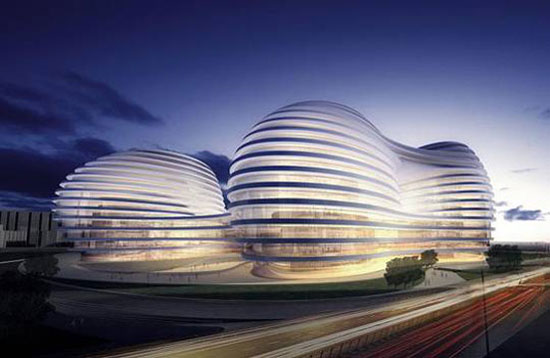

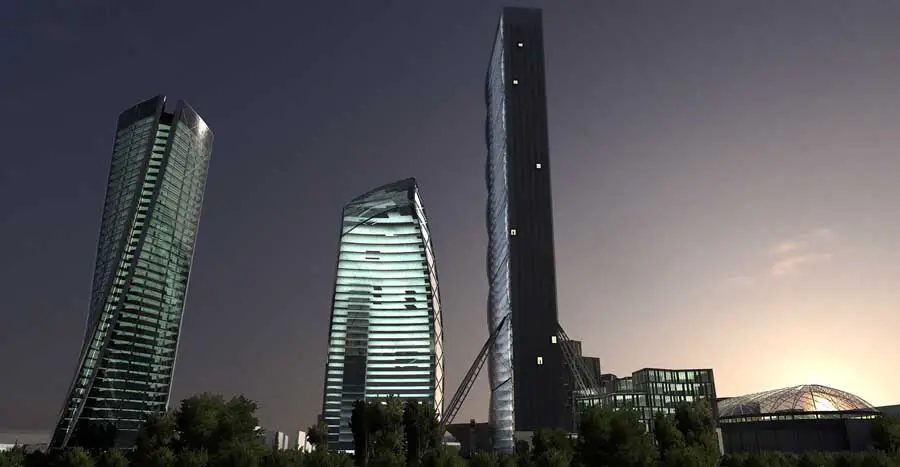 Zara Hadid has designed many buildings in her lifetime and this has allowed many people to form their own opinion about her work and some seem to think that "her aggressive geometric designs are characterised by a sense of fragmentation, instability, and movement". Zara has been classed as a "paper architect" and this due to the fact that her designs were too "avant-garde" to get past being drawn to actually being built.
Zara Hadid has designed many buildings in her lifetime and this has allowed many people to form their own opinion about her work and some seem to think that "her aggressive geometric designs are characterised by a sense of fragmentation, instability, and movement". Zara has been classed as a "paper architect" and this due to the fact that her designs were too "avant-garde" to get past being drawn to actually being built.
Personally I quite like Zara Hadid's works and this is because her works have that futuristic look I would really like to implement into my final piece and this is seen within many of her pieces which have very fluid forms. I think that many of her buildings are easy on the eye, whilst being eye catching at the same time and this allows for careful analysing of the structure of her buildings. Also, I think that her buildings have come from thinking outside the box which has allowed her to create buildings which are not like the typical building of today, I feel that her buildings are able to be accepted in the society of today but can also be seen as futuristic and would still be accepted in the world of the future because the way the world is going, everything is looking more and more futuristic and her buildings seem to be ahead of the game.
 Buckminster fuller
Buckminster fuller was an American who specialised in architecture, was also an engineer. He was born on July 12, 1895 but sadly died on July 1, 1983. He is widely known for the development of the geodesic dome.
Buckminster fuller
Buckminster fuller was an American who specialised in architecture, was also an engineer. He was born on July 12, 1895 but sadly died on July 1, 1983. He is widely known for the development of the geodesic dome.
Buckminster did a couple of jobs before he was known as a an architect, such as working as a mechanic in a textile mill, as a labourer in the meat-packing industry and most importantly he served in the U.S Navy in WW1 as an editor of a publication, as a radio operator, and as a crash rescue boat commander.
Buckminster won various awards such as the Frank P. Brown Medal from The Franklin Institute, The Gold Medal award from the AIA and was also awarded 28 United States patents and many honorary doctorates.
Examples of Buckminster's works:



 Although Buckminster was a revolutionary architect, his greatest and most influential work till today is the geodesic dome. The geodesic dome is said to be "a frame of total strength of which increases in logarithmic ratio to its size". A geodesic dome is a " spherical or hemispherical thin-shell structure (lattice-shell) based on a network of geodesics (great circles) on the surface of a sphere or a hemisphere. The geodesics intersect to form triangular elements, which have local, triangular rigidity, and so distribute the structural stress throughout the geodesic sphere". Interestingly within my research I found out that although Buckminster is praised highly for the invention of the structure, the idea of the geodesic dome was around and invented by a man called Dr. Walther Bauersfeld and this was about 20 years before.
Although Buckminster was a revolutionary architect, his greatest and most influential work till today is the geodesic dome. The geodesic dome is said to be "a frame of total strength of which increases in logarithmic ratio to its size". A geodesic dome is a " spherical or hemispherical thin-shell structure (lattice-shell) based on a network of geodesics (great circles) on the surface of a sphere or a hemisphere. The geodesics intersect to form triangular elements, which have local, triangular rigidity, and so distribute the structural stress throughout the geodesic sphere". Interestingly within my research I found out that although Buckminster is praised highly for the invention of the structure, the idea of the geodesic dome was around and invented by a man called Dr. Walther Bauersfeld and this was about 20 years before.
Personally, I really like Buckminster's geodesic dome due to the fact that the structure makes sense, the collection of triangles really gives it a sturdy appearance and also seems like it could withstand any weather or disaster such as a tsunami if the structure was placed in a fixed position within the ground, this could also mean that the spherical structure could carry on underground as well.
I plan on implementing this structure into my final idea because I think that the structure is quite ingenious and I quite like the design and the idea of a dome like structure because it has a futuristic element about it.
 Santiago Calatrava
Santiago Calatrava is a Spanish neofuturistic architect, sculptor, structional engineer and painter who was born on July 28, 1951. Calatrava is widely known for not only his sculptural bridges but also for his brilliant buildings.
Santiago Calatrava
Santiago Calatrava is a Spanish neofuturistic architect, sculptor, structional engineer and painter who was born on July 28, 1951. Calatrava is widely known for not only his sculptural bridges but also for his brilliant buildings.
Calatrava has won numerous awards such as Gold Medal of the Institution of Structural Engineers, Fazlur Khan International Fellowship and the Gold Medal from the AIA (American Institute of Architects).
Santiago Calatrava's structures have a clear blend of influences and some of these influences are Le Corbusier's Chapel Notre Dame du Hau, Antoni Gaugi, animals and plant structures.
Some of Caltrava's work:

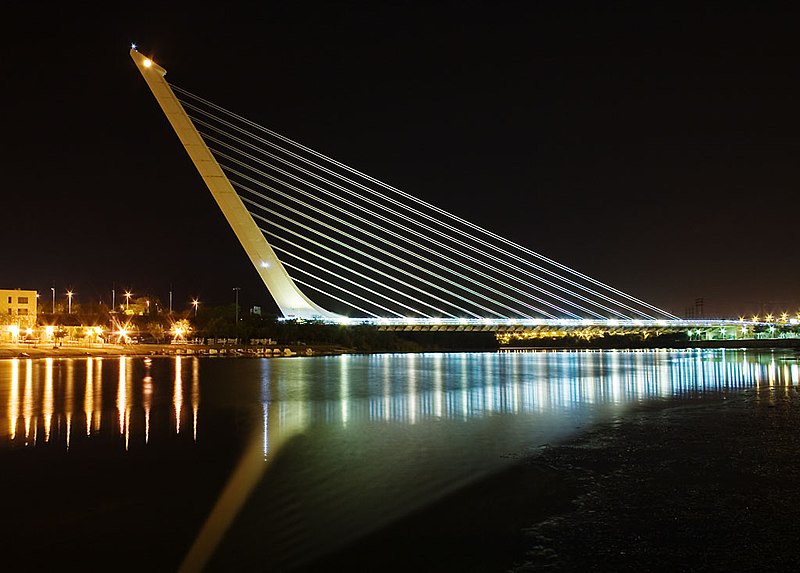


 Within my research I found out that "Calatrava has become known for the arching sculptural forms of his large public buildings. These structures—railway stations, bridges, airports, and museums—are built of concrete, metal, and glass and are rarely completely enclosed. The unusual spaces and swooping shapes of these works, which often seem poised for flight, reflect a refined aesthetic sensibility informed by engineering skill."
Whilst studying Calatrava's works, I realised that his works are usually free flowing and a lot of them seem to have a skeletal structure. Also, many of them are either in the shape of a bird or appear to be about to take fight and this might be because he likes birds but whatever the reason, it gives his buildings a graceful and elegant appearance.
Within my research I found out that "Calatrava has become known for the arching sculptural forms of his large public buildings. These structures—railway stations, bridges, airports, and museums—are built of concrete, metal, and glass and are rarely completely enclosed. The unusual spaces and swooping shapes of these works, which often seem poised for flight, reflect a refined aesthetic sensibility informed by engineering skill."
Whilst studying Calatrava's works, I realised that his works are usually free flowing and a lot of them seem to have a skeletal structure. Also, many of them are either in the shape of a bird or appear to be about to take fight and this might be because he likes birds but whatever the reason, it gives his buildings a graceful and elegant appearance.
I quite like Calatrava's structures and this is because they have a futuristic essence about them and this is what I plan on using to influence my final piece to look the way I want it to look. His works really stand out from every other building around them and this is what I plan on doing with my buildings for my final piece and this is because I would like for my buildings to kick-start a new generation of ideas for the future.
Norman Foster
Norman Foster
is a British architect who was born on June 1, 1935. He is the founder and the chairman of his own company called Foster + Partners which is known for creating famous high-tech architecture.
He is seen as Britain's most outstanding architect and this has come as no surprise seeing as he was awarded the Pritzker Architecture prize and this is due to his brilliant work within the world of architecture and contribution towards humanity.
Within Norman's early life, he was quite interested with the works of Ludwig Mies van der Rohe, Oscar Niemeyer, Frank Lloyd Wright and Le Corbusier.
Norman only really started getting recognised after his first major building which was the Sainsbury Centre for Visual Arts, the building was designed by Norman and was finished in 1978.
Some of Norman's Work:





 Within my research about his work, I found out that "He uses lines to form organic shapes that let your eye to easily flow around them. Foster also often plays with the duality of in/out. Many of his building have a skeleton of the outside of the building that is visible to the eye rather than hiding it within. He also creates many spaces inside that are enclosed in glass and almost cause you to feel as though you are outside when you’re really surrounded by glass. Foster puts a lot of thought into how his designs will make you feel once you’re interacting with them through the use of different materials and the space of an area which is often something that gets overlooked". Also, within my research, I found out that "Foster's earliest works explored the idea of a technologically advanced "shed," meaning a structure surrounded by a lightweight shell or envelope" and this might explain why they all look like some sort of a casing over the interiors.
Within my research about his work, I found out that "He uses lines to form organic shapes that let your eye to easily flow around them. Foster also often plays with the duality of in/out. Many of his building have a skeleton of the outside of the building that is visible to the eye rather than hiding it within. He also creates many spaces inside that are enclosed in glass and almost cause you to feel as though you are outside when you’re really surrounded by glass. Foster puts a lot of thought into how his designs will make you feel once you’re interacting with them through the use of different materials and the space of an area which is often something that gets overlooked". Also, within my research, I found out that "Foster's earliest works explored the idea of a technologically advanced "shed," meaning a structure surrounded by a lightweight shell or envelope" and this might explain why they all look like some sort of a casing over the interiors.
Personally I think that his work is phenomenal and this is because his work unlike many other buildings is quite unique in terms of appearance. What I have noticed about his works is that most of them are mainly built using glass and he implements a lot of curves within his buildings. Also, many of his buildings appear to look like they have a fixed structure about them and allows me to think that he has really thought about the design of the building and seems as though he has seen what the building would look like when built before actually putting his ideas on paper.
Within my project I would really like to implement the use of curves, steel and glass for my final piece so I think that this architect would be of great use as an influence.
 Grayson Perry
Grayson Perry






































